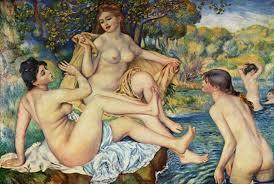
Today we’ll begin a 3-part series on the history of obesity from a historical perspective, from the Stone Age to current day, across cultures and throughout the world, contributed from a Sermo physician. If you’re a MD or DO, please join us inside our physician-only community!
Obesity today is described as an epidemic, blamed on fast food and modern life style, and defined as a contributor of increased mortality. We have adopted a new BMI scale and as physicians, we set goals for ourselves and our patients to achieve a “healthy” BMI. Obesity is described as a relatively new pandemic, not previously seen in the US and other areas of the world.
Obesity is not a new phenomenon. In fact, obesity has been in and out of favour, many times over the decades, centuries, and millennia.
Obese individuals are and have been called various names from lazy to successful, from living in poverty to prosperous, and described as slovenly, not attractive, bulging; to rotund, pleasingly plump, proper largesse, voluptuous, portly, and more. Today, obesity in the US and Western Societies is a negative stigma, but this is not so in all countries and or cultures within the US. Terminology as well as society’s view of obesity has shifted many times.

Early humans were hunter gatherers and did not have homes or regular shelters. These ancient peoples were on the move and were not obese. There are no anthropological references to the pre Stone Age humans as obese or valuing or devaluing obesity that I could find. However, the Stone Age brought about the first documented change. These peoples had primitive tools; lived in permanent dwellings from caves to early houses; had early gardens, which decreased the need to forage for food; and hunted with what was then considered advanced technology. Anthropologic diggings that cross from northern Africa through Europe and to Eastern Russia have uncovered some figures that depict what was the ideal body of the time, obese by our standards.

The early Egyptians left carvings on walls that depicted the “ideal” body shape. Excess weight was a symbol of prosperity for both men and women. The attitude that obesity meant success dates to the earliest of Egyptian writings and / or artefacts.
Also in the BC era, the Book of Isaiah cites fatness as a way to freedom. “The LORD of hosts will arouse a scourge against him . . . His staff will be over the sea and He will lift it up . . . so it will be in that day, that his burden will be removed from your shoulders and his yoke from your neck, and the yoke will be broken because of fatness. “ [a]

Throughout the world, obesity was considered a sign of success, power, and wealth. In China, plump beauty was the status of both the Tang and the Song dynasty. China had been divided under prior dynasties and was again reunified. During the era of the Tang and Song Dynasties, “China became the richest, powerful and most advanced country in the world.” [b] Paintings of Emperors and other powerful figures emphasize their “robust” size.
The Renaissance Era occurred almost simultaneously in Europe and the UK. They too saw extra weight as a symbol of success, wealth, power (success and wealth were associated with not having to work the fields or early mills), and health. Why better health? The belief was that extra weight might help withstand infectious diseases. During this era, Rubens (1577–1640) regularly portrayed full-bodied women in his pictures, which portrayed men and women considered beautiful then, but obese by today’s standards.
I will end this first post on the history of obesity with a quote from a poem of William Shakespeare, who often commented on fatness, voluptuous women, and men of large size.
“My beauty as the spring doth yearly grow; My flesh is soft and plump, my marrow burning.” [c]
Stay tuned for the next post (ERA 2 – 1600 – about 1910) on the History of Obesity.
Bibliography
A: Isaiah 10-27 The Bible
B: http://www.hfcsd.org/webpages/jfrench/files/Tang%20and%20Song.ppt
C. Venus and Adonis – 1593 William Shakespeare; poem














